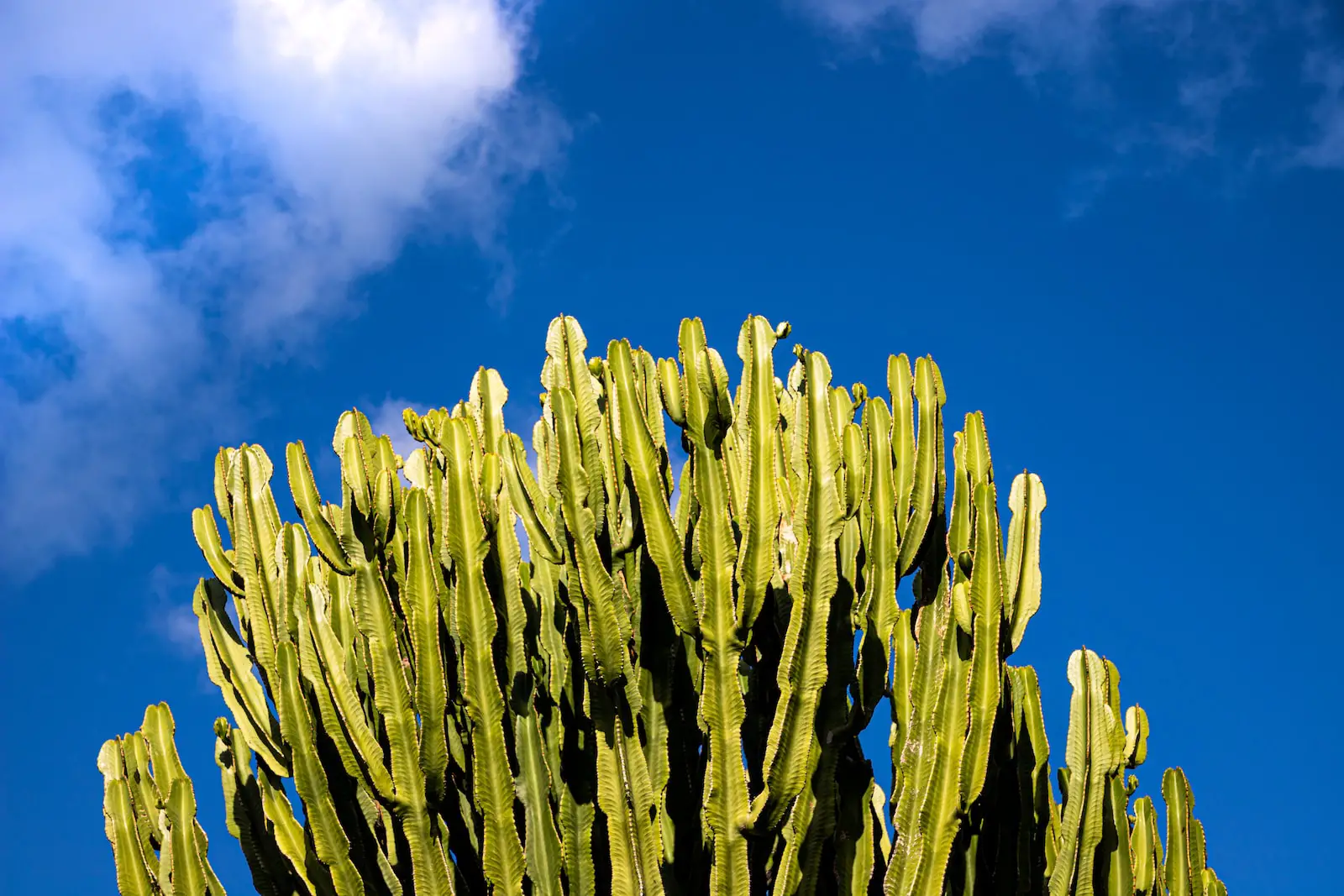Euphorbia is an incredibly diverse genus of plants, encompassing over 2,000 species that vary widely in shape, size, and growth habit. It includes succulents, shrubs, and herbaceous perennials, many of which are popular in both indoor and outdoor gardens. Some of the well-known members of this genus are the Poinsettia (Euphorbia pulcherrima), Crown of Thorns (Euphorbia milii), and the many succulent varieties.
What unites these varied plants is their unique latex-like sap, which is often milky-white and can be toxic or irritant. This sap is a defining characteristic of the genus and serves as a defense against herbivores. Euphorbias are native to a wide range of habitats, from tropical rainforests to arid deserts, and their care requirements can differ greatly depending on the specific species.
The flowers of Euphorbias are typically small and inconspicuous, but they are often surrounded by colorful bracts that attract attention. These bracts, in combination with the often eye-catching foliage, have made Euphorbias a favorite among gardeners and landscapers. The cultivation of Euphorbia requires understanding the particular needs of the species you are growing, as the genus is so diverse.
| Attribute | Details |
|---|---|
| Common Names | Spurge, Poinsettia, Crown of Thorns |
| Botanical Name | Euphorbia |
| Family | Euphorbiaceae |
| Plant Type | Succulents, Shrubs, Herbaceous Plants |
| Mature Size | Varies (1 ft to 20 ft) |
| Sun Exposure | Full sun to partial shade |
| Soil Type | Well-draining soil |
| Hardiness Zones | 4-12, depending on species |
| Native Area | Worldwide, excluding polar regions |
Euphorbia Care
The care of Euphorbia depends largely on the specific species and its native habitat. Succulent types often require bright light and less frequent watering, while herbaceous types might prefer more consistent moisture. A commonality among most Euphorbias is their need for well-draining soil to prevent root rot.
Despite the vast differences, most Euphorbias are relatively low-maintenance, thriving with basic care that mimics their natural environment. It’s essential to understand the specific needs of the particular species you are growing to provide optimal care.
Light Requirement for Euphorbia
Most Euphorbias prefer bright light, with some succulent types needing full sun to thrive. Others, especially those native to forested environments, may prefer dappled or indirect light. Matching the light requirements to the specific species will ensure healthy growth and development.
Soil Requirements for Euphorbia
Well-draining soil is a must for Euphorbias. Succulent types may prefer a cactus or sandy mix, while other types may thrive in standard potting soil with added perlite or sand. Ensuring proper drainage will prevent the common problem of root rot.
Water Requirements for Euphorbia
Watering needs vary widely among Euphorbias. Succulent types often require less frequent watering, allowing the soil to dry between waterings. Other types may prefer more consistent moisture. Overwatering is a common mistake and should be avoided.
Temperature and Humidity
Euphorbias generally prefer temperatures between 60-75°F (15-24°C), though they can tolerate higher temperatures, especially the succulent types. Humidity preferences can vary, and matching the native habitat of the specific species is typically the best approach.
Fertilizer
Euphorbias generally require minimal fertilization. A balanced, water-soluble fertilizer applied during the growing season is often sufficient. Over-fertilization should be avoided, as it can lead to weak, leggy growth.
Pruning Euphorbia
Pruning can be done to shape the plant or remove dead or diseased parts. Care must be taken to avoid contact with the sap, as it can be an irritant. Always wear gloves and wash any tools after pruning.
Propagating Euphorbia
Propagation is typically done through cuttings or division. Cuttings should be allowed to dry and callus before planting. Use gloves to avoid contact with the sap during this process.
How To Grow Euphorbia From Seed
Growing Euphorbia from seed can be a rewarding but slow process. Sow the seeds in well-draining soil and keep them warm and lightly moist. Germination times can vary greatly among species.
Common Pests & Plant Diseases
Aphids
Aphids can be controlled with insecticidal soap or neem oil.
Powdery Mildew
This fungal disease can be prevented with proper air circulation and treated with fungicides.
Root Rot
Caused by overwatering, root rot can be prevented with well-draining soil.
Common Problems With Euphorbia
Yellowing Leaves
This may be caused by overwatering or inadequate light.
Leggy Growth
Leggy growth often results from insufficient light or over-fertilization.
Sap Irritation
The sap can cause skin irritation; handle with care, using gloves.
Pro Tips
- Choose the right species for your environment, considering light, humidity, and temperature.
- Avoid overwatering, particularly for succulent types.
- Handle with care, using gloves to avoid skin irritation from the sap.
- Consider the native habitat of the specific species to guide your care practices.
- Regularly check for pests and diseases to catch any problems early.



